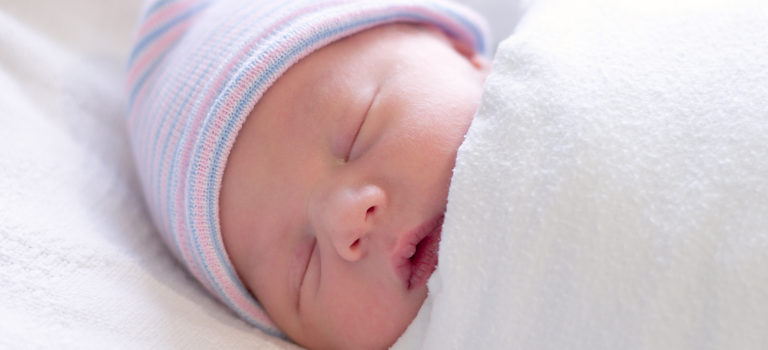As the winter temperatures drop, there are often questions about keeping babies warm while they sleep. Here’s a few tips to keeping baby sleeping snuggly and safely.
The following post was written by Judith Owens, pediatric sleep expert, for babycenter.
It’s safer not to use any sort of loose or thick bedding in your baby’s crib, at least for the first year. That because too much bedding, or the wrong kind of bedding, can cause accidental suffocation and overheating, which are believed to be a risk factor for sudden infant death syndrome, or SIDS.
A skullcap and pajamas with feet are good choices. In general, layered clothing for sleep is practical, in case you need to remove or add a layer. “Wearable blankets” or sleep sacks that won’t get tangled can also help keep your baby cozy.
Contrary to what you might think, babies don’t need more bundling up than adults. As a general guide, your baby will be comfortable using about the same amount of clothing and coverings that you would be comfortable using at the same room temperature. An ideal room temperature for your baby is around 70 to 72 degrees F.
You can use a space heater in a chilly room, but make sure it’s fireproof. And remember that once your baby starts to be more mobile — once she starts crawling, for example — a space heater can pose a burn risk. To warm cold sheets, place a hot water bottle or a heating pad in the bed for a while before bedtime. (The microwaveable type is useful because it doesn’t have to be plugged in.) Just be sure to remove it before putting your baby down!
Here are some simple ways to tell whether your baby is warm enough: If her skin is blotchy and her arms and legs are cool and her cheek feels cool to the touch, add a layer or cover her head (with a hat) and feet. On the other hand, if your baby is damp or sweating, it’s a sign that she’s over-bundled and moisture is accumulating on her skin. Too much moisture can lead to prickly heat, even in the winter, so take a layer off or change your baby’s clothes so more air can flow over her skin.
For more information regarding best practices and safe sleep, click here.

